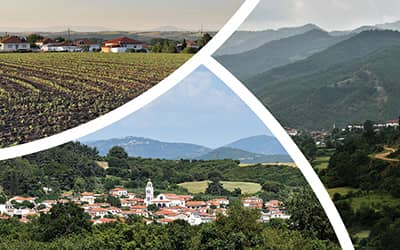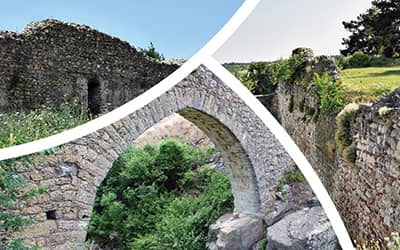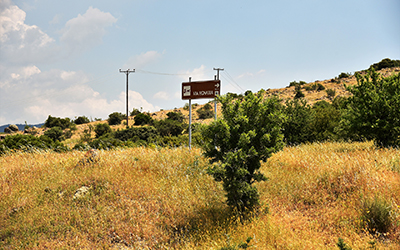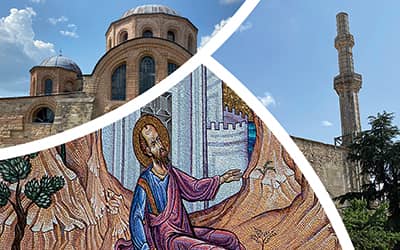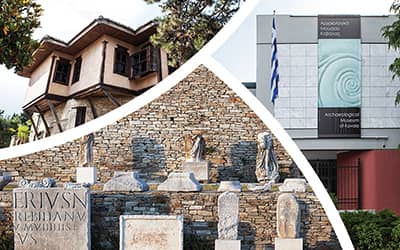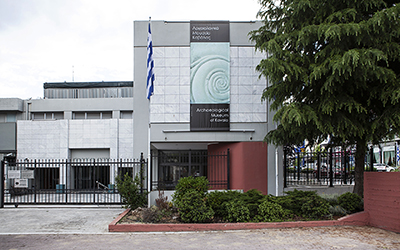
Route's points of interest
- Start point: Krinides
- 1. Dikili Tash
- 2. Philippi
- 3. Archaeological Museum of Philippi
- 4. Castle of Kavala
- 5. Via Egnatia
- 6. Kamares
- 7. Halil Bey Mosque
- 8. Imaret of Kavala
- 9. Tobacco Museum
- 10. Archaeological Museum of Kavala
- 11. Kavala town hall
- 12. Wix Mansion
- 13. Great Club of Kavala
- 14. Ancient theater of Philippi
- 15. Naval Museum of Kavala
- End point: Kavala
You may also like
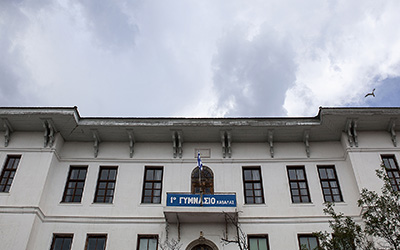
Kavala 1st high school
Kavala 1st High School is the oldest high school in town and is located in Konstantinidou Poiitou 16 street. The school was built by the town's Turkish community during the period 1909-1910. Its architecture is a mixture of Neoclassical and Ottoman elements (such as its wooden eaves). Apart from hosting a Turkish school, it also hosted a Greek hospital during the Balkan Wars until 1916. The building was acquired by the Greek state in 1922. Kavala, the blue city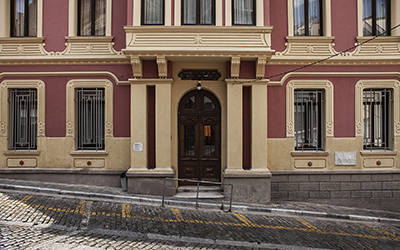
Kavala 5th high school
Kavala 5th high school in 14-16 Theodorou Poulidou street in the Panagia district in a historic building of Ottoman neoclassicism of the early 20th century. The building is listed as a monument because of its architectural and historical value.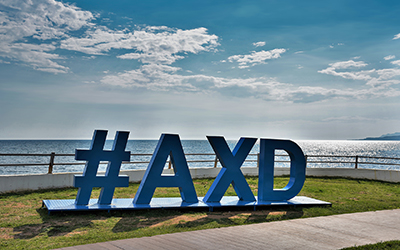
Alexandroupolis
Capital of the prefecture of Evros and main junction of the European Union with development levers such as the Egnatia Highway, the airport, the port and the railway station. With a population of 57,812 inhabitants, it unites Europe and Asia, West and East. Must-see attractions are the Lighthouse, the Evros Delta, the Cyclops Polyphemus cave, Ancient Doriskos, the Ancient Makri olive grove, the Via Egnatia, the Roman baths of Traianoupolis, the ancient city of Zone and the Panagia Cosmosoteira Monastery. The city's museums include the Natural History Museum, the Ethnological Museum of Thrace, the Archaeological Museum, the Historical Museum, the Ecclesiastical Museum, the Folklore Museum of the Cappadocian Community of Evros, the Museum of Sarakatsani Tradition. The city also has a garden theater at the Altinalmazi Ecopark, which hosts cultural events. There are also many historical and listed buildings such as Zarifios Pedagogical Academy, the old Kapnomagazo (tobacco store), which hosts the Municipal Library, the Old Hospital of Alexandroupolis (nowadays a Music School), the historical building of the National Bank of Greece, which hosts the Reading Room of the Democritus University of Thrace, the Warehouses of the port, the 1st and 3rd Primary Schools, etc. There are two hospitals, a University Hospital and a Military Hospital. Municipality of Alexandroupolis (video)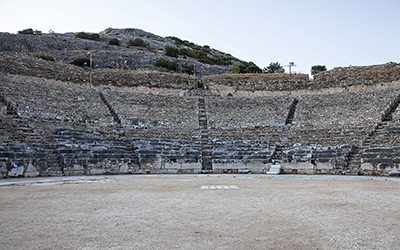
Ancient theater of Philippi
The emblematic theatre in Philippi The Ancient Theater of Philippi was built by Philip II in 356 BC, immediately after the conquest of the city by the Macedonian king. After the conquest of the city by the Romans, during the 1st and 2nd c. AD, the theater underwent many changes to accommodate a larger number of spectators and to adapt to the particular Roman spectacles. The most important operations took place in the 2nd century AD with several additions of auxiliary spaces as well as the construction of the scene, which was designed with two floors to the orchestra and three floors on the exterior of the theater. At this point it was decorated with marble reliefs depicting the female followers of Bacchus, the maenads, satyr masks and other symbols of god Dionysus. In the 3rd century AD the theater was converted into a typical Roman arena with all the necessary modifications for the needs of the new spectacles and for the safety of the spectators. The figures related to the duels, Mars, Victory and Nemesis, were carved then. Unfortunately, in the following centuries, the predominance of the new religion, which was opposed to violent spectacles and theatrical performances in general, would bring the desolation of the theater, at least as a gathering place for spectacles. The great earthquake of the 7th century AD and the fire that destroyed the stage rendered whatever material could be used for second building use. The parts of the theater that remained in good condition housed other commercial activities. After rescue excavations and restoration work, the ancient theater hosts performances of the Philippi Festival every summer. Ministry of Culture DIAZOMA EMT Greece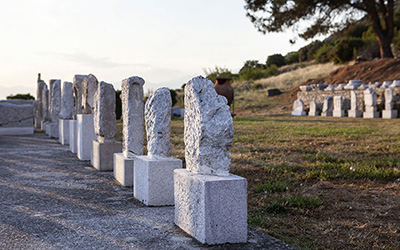
Archaeological Museum of Philippi
Masterpieces bring to life the history of a great city of antiquity The Archaeological Museum of Philippi houses all the findings from the excavations of this important city of Antiquity and the first Byzantine years. The exhibition is divided into two large sections. On the ground floor of the Archaeological Museum the visitor can see the findings from the excavations that come from the area before its colonization, from the prehistoric period to the 4th century BC. The most important and numerous findings include coins, jewelry, sculpture and vases from the founding of the colony to the end of the Roman period. The findings from the Christian city are exhibited on the first floor of the museum. Among them are inscriptions, parts of buildings, mosaics, vases and coins from the early Christian and early Byzantine years, which coincide with the prosperity of the city, until the recession (7th century AD) and its abandonment following the Turkish conquest in the late 14th century. With the aid of visual material, the visitors complete their acquaintance with the city of Philippi. Greek Archaeological Museums Ministry of Culture EMT Greece Visit Kavala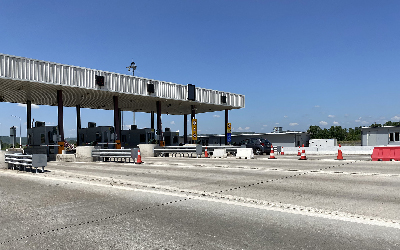
Egnatia highway
It is the longest highway in Greece, 670 kilometers long. It is part of the European Route 90. It starts from Igoumenitsa in Epirus and ends at the Greek-Turkish border at Kipoi of Evros in Thrace. Its name is due to the Ancient Egnatia Road that crossed almost the same area.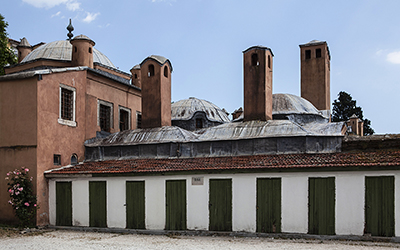
Imaret of Kavala
Religious, educational and charitable institution which was founded in the early 19th century by Mohammed Ali, in his hometown of Kavala. Until 1902, it was an Islamic seminary. “Imaret” means “construction” (from the Arabic “imara”) and more generally an urban unit consisting of a market, a mosque and other institutions.It includes two madrassah (seminaries), two large prayer halls, a primary school for boys, an imaret (kitchen-orphanage) and offices. Today, it is a luxury hotel. It is on Theodorou Poulidou street, at a prominent spot within the walls of the old town, on Panagia peninsula. It covers an area of 4,200 sq.m. and is about 120 meters long. It is a unique architectural example of Ottoman Baroque.Visit Kavala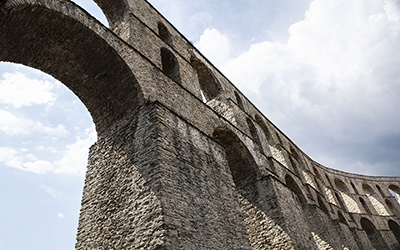
Kavala
The geographical location, the natural port and the location of Kavala close to Mount Paggaio made the city one of the oldest ones in the region. It is the capital of the Kavala prefecture. In ancient times, it was called Neapolis (new town) and in Byzantine times Christoupolis (town of Christ). Since 1470, it has had its current name. It has one of the largest passenger ports (Apostolos Pavlos) as well as one of the most important commercial ports (Philipos II). It also hosts an International Airport (Alexander the Great) and is the headquarters of the Diocese of Philippi, Neapolis and Thassos. The city is built amphitheatrically at the foot of Mount Symbol. In the wider area, Paul spread Christianity in Europe (49 AD) and baptized the first European Christian. The history of Kavala dates to prehistoric times. After the Greco-Turkish War (1919–1922), Greek refugees from Eastern Thrace, Eastern Romilia and Asia Minor settled in the city. Along with their traditions, they brought along tobacco cultivation, an activity which led the city to great economic development. Important sites by historical periods include the Ottoman Ibrahim Pasha Mosque, which was converted into the orthodox church of St. Nikolaos, the Halil Bey Mosque, the Kavala Imaret, the Mehmet Ali Pasha Mansion, the Kavala Fortress, Kamares, which used to be the old aqueduct of the city, the 5th Kavala High School, built by the Turkish tobacco merchant Patsatzik, and many more. Kavala, as a city of tobacco processing, hosts several tobacco warehouses, such as the Municipal Tobacco Warehouse, which is part of the Ottoman building complex, the Austro-Greek Complex, the Shopping Center of Kavala, which is also an ex-tobacco warehouse, the Big Club, the Old Town Hall (Tokos Mansion), the City Hall of Kavala, the Vix Mansion and others. The Catholic Church of Apostle Paul-Lazaristes Monastery, the Cathedral of Timios Prodromos-Agios Ioannis and several museums, such as the Archaeological Museum, the Historical and Folklore Museum, the Museum of Refugee Hellenism, the Municipal Tobacco Museum, the Naval Museum of Kavala, and more are also very interesting. Kavala is the birthplace of Vassilis Vassilikos, Greek writer of the political novel Z, and of Olympic javelin thrower Anna Verouli. Visit Kavala Municipality of Kavala Up Drones (video)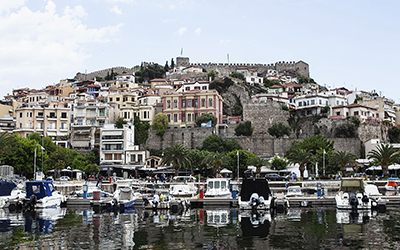
Castle of Kavala
Walking around the castle of Kavala The castle of Kavala is located at the highest point of the peninsula, which is naturally a fortified location. It was built in 1425 on the same place the Byzantine castle was. The Byzantine castle of Christoupolis was destroyed after a Turkish siege in 1391. Its purpose was to control Via Egnatia and the Aegean Sea, which was claimed by the Venetians with their strong fleet. Indeed, in the summer of the same year it was captured by the Venetians just for a few days. After a siege lasting three weeks, it was recaptured by the Turks again. In about 1520, new works were carried out on the castle by Sultan Suleiman or his predecessor Selim. From the late 17th century part of the castle's basement was converted into a prison and remained in use until the 19th century. From 1885 the castle ceased to be a military and administrative center and was abandoned. At the beginning of the 20th century it was purchased by the Egyptian Khedive (viceroy) Abbas Khilmi. The Municipality of Kavala in the late 1960s bought the castle from the Egyptian Waqf Organization. Today, apart from being an attraction and a monument of the city, it is a venue for cultural events with a theatre and an exhibition hall. Visitors can see the fortified enclosure with two square towers on the north side, a polygonal tower on the east and two bastions on the east and southwest sides. A transversal wall dividing the citadel into two parts creating the inner and the outer enclosure. In the middle of the wall rises the cylindrical tower. For access to the site there is a tourist train with departures every hour. Starting point is the National Bank of Greece at Ionos Dragoumi Street. Otherwise, visitors can walk to the entrance of the castle on its south-eastern side via Fidiou Street. Kavala Castle Kastrologos JTI Target (video)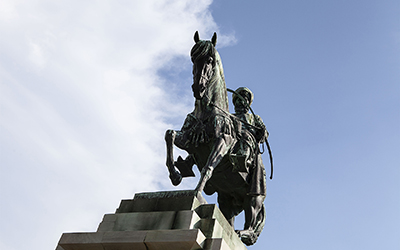
Mehmet Ali konak
A historic konak in Kavala In the old town of Kavala, at the southern end of the peninsula, is the konaki (mansion) of Mehmet Ali Pasha. It was built in about 1780. This is where Mehmet Ali, later governor of Egypt, grew up. The Konaki is a two-story building with many rooms such as kitchen, cellar and stable on the ground floor. On the upper floor there are separate rooms for men and women, a reception area for visitors and the sofa. Its location is privileged as it has an unobstructed view. After its restoration, it served as a cultural space and today it functions as a museum. Across the square from the konaki, the square was also named after Mehmet Ali. In the center of the square stands his equestrian statue, donated by the Greeks of Egypt. It was sculpted by Konstantinos Dimitriadis and its unveiling was done in 1949 by Prince Amr Ibrahim of Egypt.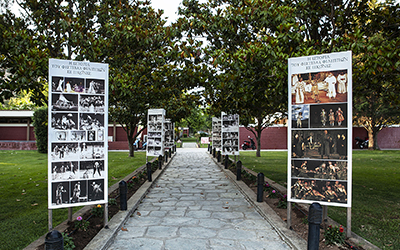
Filippi Festival
It is one of the greatest cultural events in the area of Kavala; it is held in July and August mainly at the Ancient Theater of Philippi. Certain events also take place at other venues all over the city: the Fortress, the Imaret, the Old Music, the Gardens of Mehmet Ali, schools, temples, and folk cafes, but also places around the archeological site of Philippi, such as the Mud Baths of Krinides. Since 1957, it attracts thousands of Greeks and foreigners who visit it, to attend performances of ancient drama, but also contemporary plays, concerts of great artists, dance groups and dance performances, poetry evenings, exhibitions, and various other events. ALL ABOUT FESTIVALS Visit Kavala https://www.kavalagreece.gr/en/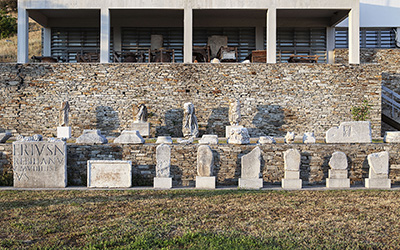
Philippi
An important city of Macedonia The city was founded by settlers from Thassos Island, in 360 BC as the area was fertile, it provided abundant timber, it was rich in precious metal deposits and of course it was strategically located. These were the reasons why the king of Macedonia, Philip II, agreed to help the new inhabitants when they asked for his help, while being attacked by the Thracians. In 356 BC Philip II captured and fortified the city, giving it his name. A period of development for the city followed. In addition to the defensive wall and the houses, the theater and various other public buildings were built. In 148 BC Macedonia was conquered by the Romans. Via Egnatia connected Philippi with the other centers of the time, contributing to the development of the city. In 42 BC Octavian captured the city after the battle of Philippi. Since then, it became an important flourishing Roman colony, known as Colonia Augusta Julia Philippensis. An important milestone for the city was the preaching of the Christian religion by Apostle Paul and his imprisonment in 49 AD. As a result, the first Christian community was founded in Philippi. As Christianity prevailed as the official religion of the new state with Constantinople its capital, Philippi developed into a religious center and was upgraded to a metropolis. In the early Christian period (4th-6th AD) three basilicas were built and the metropolitan church dedicated to the Apostle Paul. The "Octagon" complex, built on the site of older Roman buildings, is also of special architectural importance. Recession in the city of Philippi is observed in the 7th century AD when Slavic raids and intense seismic activity forced its inhabitants to abandon it. In the following centuries it functioned as a Byzantine fortified settlement until its conquest by the Ottomans in about 1383 when it was abandoned. The visitor of the archeological site can walk in the ancient city of Philippi and see the most important buildings. These are the citadel, the city walls with a total length of 3.5 km and construction phases from the period of King Philip II (4th century BC) and Justinian I (6th century AD). The theater of Philippi was built by Philip II in the middle of the 4th century BC. The special characteristics and the needs of the Roman spectacles brought modifications to the theater in the 2nd and 3rd c. A.D. The forum, the complex of public buildings in the Roman market, was the administrative, religious and economic center of Philippi in the Roman period. From the later period, when Christianity succeeded the old religion, the following buildings survive. The building complex "Octagon", east of the market. This, in addition to the episcopal octagonal church, included a baptistery, a two-story residence of the bishop and a monumental gate to the Via Egnatia. The existence of three other large Christian temples reveals the size and importance of the city during the early Byzantine period. The three-aisled basilica A from the end of the 5th century AD dimensions 130x50m., the later, 550 AD, three-aisled basilica B with a dome, which is not preserved today. A particular characteristic of this basilica was the dome on the sacred step. The great importance of the church and the early Byzantine city is reflected in the artistic influences from the capital on the sculptural decoration. It is worth noting that Basilica B was built on the Roman palace. Equally majestic and richly decorated is the Basilica C dating to the 6th c. AD with double pulpit and rich marble paneling and sculptural decoration. The Roman cistern is located near Basilica A. Here, Apostle Paul is believed to have been imprisoned and for this reason it is called the "prison" of the Apostle Paul and was turned into a place of worship. The findings of the excavations carried out from 1914 until today are exhibited in the Archaeological Museum of Philippi. The Early Christian monuments are among the best-preserved monuments of this type. The Archaeological Site of Philippi has been a UNESCO World Heritage Site since 1986. Ministry of Culture Diazoma Unesco Egnatia Motorway S.A. National Geographic JTI Target (video)
